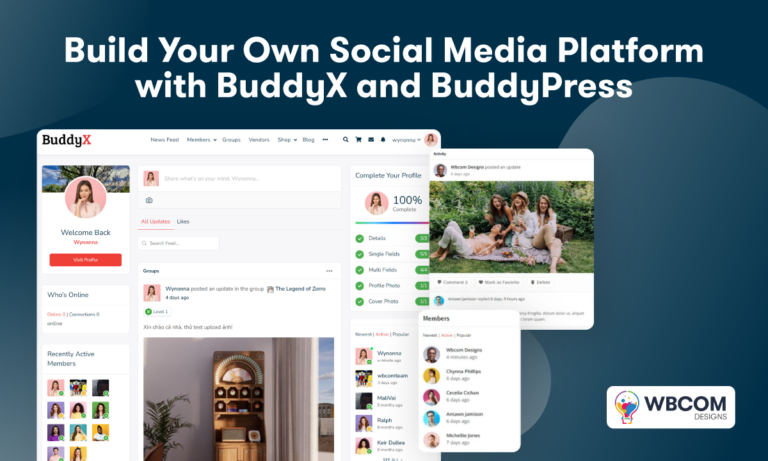Welcome to the world of content creation and digital presence, where the choice of platforms can significantly impact your online strategy. In this comparison, we delve into the characteristics of three popular platforms—WordPress vs HubSpot vs Substack—to help you navigate the landscape and make an informed decision tailored to your unique needs.
Join us as we explore the nuances of WordPress, HubSpot, and Substack, considering factors such as customization, ease of use, scalability, and monetization options.
Table of Contents
ToggleWordPress
WordPress is a versatile and widely used content management system (CMS) that empowers users to create and manage websites with ease. Launched in 2003, it has evolved into a robust platform offering a user-friendly interface and a vast ecosystem of themes and plugins. Whether for personal blogs, business websites, or e-commerce ventures, WordPress provides a customizable and scalable solution. Its flexibility, coupled with a large and active user community, makes it a go-to choice for individuals and businesses looking to establish a dynamic online presence without extensive technical expertise.
Hubspot
HubSpot is an all-in-one inbound marketing, sales, and customer service platform designed to streamline and integrate various aspects of a business’s online activities. It offers a comprehensive suite of tools that includes marketing automation, customer relationship management (CRM), analytics, and more. HubSpot enables businesses to attract, engage, and delight customers by providing solutions for content creation, lead generation, and personalized interactions. With a focus on inbound methodology, HubSpot aims to help businesses attract and retain customers through relevant and valuable content, ultimately fostering growth and building lasting customer relationships.
Substack
Substack is a specialized platform designed for newsletter creation and distribution. Launched in 2017, it offers a streamlined and user-friendly experience for writers, journalists, and content creators who want to connect with their audience through email newsletters. Substack simplifies the process of creating and sending newsletters, providing tools for customization and content delivery. With a focus on simplicity and a growing community of independent creators, Substack has become a popular choice for those looking to build and engage with their audience through curated, subscription-based email content.
Comparison Table
Here’s a simplified comparison table for WordPress, HubSpot, and Substack:
| Feature | WordPress | HubSpot | Substack |
|---|---|---|---|
| Type | Content Management System (CMS) | Inbound Marketing, Sales, and Service Platform | Newsletter and Subscription Content Platform |
| Customization | Highly customizable with themes and plugins | Customizable, but may have limitations | Limited customization for simplicity |
| Use Cases | Websites, blogs, e-commerce | Marketing automation, CRM, sales, service | Email newsletters, subscription content |
| Ease of Use | Moderate to high learning curve | Moderate to high learning curve | User-friendly and straightforward |
| Features | Vast range of features with plugins | Marketing automation, CRM, analytics, etc. | Simplified for newsletter creation |
| Scalability | Highly scalable for various website sizes | Scalable for growing businesses | More suitable for individual creators |
| Cost | WordPress itself is free; costs for hosting, themes, plugins | Subscription fees based on usage levels | Free for basic services, charges for paid subscriptions |
| Flexibility | Very flexible, users have full control | Flexible, but with some limitations | Limited flexibility, focused on simplicity |
| Monetization Options | Depends on plugins and integrations | Provides tools for sales and monetization | Built-in support for paid subscriptions |
| Community Support | Large and active community | Active community and customer support | Growing community with a focus on creators |
WordPress vs HubSpot vs Substack
WordPress, HubSpot, and Substack are all popular platforms, but they serve different purposes and cater to different needs.
Let’s compare them:
WordPress
Type: WordPress is a versatile content management system (CMS) that can be used for building websites, blogs, and online stores.
Customization: It offers high customization capabilities with a wide range of themes and plugins. Users have full control over their website’s design and functionality.
Use Cases: Suitable for various types of websites, including blogs, portfolios, business websites, and e-commerce sites.
HubSpot
Type: HubSpot is an all-in-one inbound marketing, sales, and service platform.
Features: HubSpot provides tools for marketing automation, customer relationship management (CRM), email marketing, analytics, and more.
Use Cases: Ideal for businesses looking for an integrated solution to manage their marketing, sales, and customer service activities.
Substack
Type: Substack is a platform specifically designed for newsletter creation and distribution.
Features: It focuses on simplicity, allowing writers to easily create and send newsletters to subscribers. It also includes features like paid subscriptions.
Use Cases: Best suited for writers, journalists, and content creators who want to build and monetize their email newsletters.
Considerations
Purpose: Choose based on your primary goal. If you need a website, WordPress is a strong choice. If you are focused on inbound marketing and sales, HubSpot might be more suitable. If your focus is on newsletters and subscription content, Substack is designed for that purpose.
Ease of Use: WordPress requires some learning, but it offers a lot of flexibility. HubSpot may have a steeper learning curve due to its comprehensive features. Substack is designed to be user-friendly and straightforward.
Cost: Costs vary. WordPress itself is free, but you may incur expenses for hosting, themes, and plugins. HubSpot usually involves subscription fees. Substack offers free basic services but charges a percentage for paid subscriptions.
Scalability: WordPress is highly scalable and suitable for small blogs to large enterprise websites. HubSpot is scalable for growing businesses. Substack is more focused on individual content creators.
Which Is The Best Choice In WordPress vs HubSpot vs Substack?
The choice between WordPress, HubSpot, and Substack depends on your specific needs, goals, and the nature of your online presence. Each platform serves distinct purposes, and the “best” choice varies based on individual requirements.
Here are some considerations to help you decide:
If you need a flexible and customizable website
Best Choice: WordPress
Why: WordPress is renowned for its versatility and extensive customization options. It’s ideal for building various types of websites, including blogs, portfolios, business sites, and e-commerce platforms.
If you require integrated marketing, sales, and service tools
Best Choice: HubSpot
Why: HubSpot is an all-in-one platform that offers marketing automation, CRM, sales, and service tools. It’s suitable for businesses looking for a comprehensive solution to manage their online activities seamlessly.
If your focus is on newsletters and subscription content
Best Choice: Substack
Why: Substack is purpose-built for newsletter creation and distribution. It caters specifically to writers and content creators who want a straightforward platform for engaging with their audience through subscription-based email content.
Final Thought
The best choice among WordPress, HubSpot, and Substack depends on your specific needs. If you seek a customizable website, WordPress is versatile and widely used. HubSpot is ideal for businesses requiring integrated marketing tools, while Substack caters to content creators focusing on newsletters and subscription content. Consider your balance between simplicity and flexibility, as well as budget constraints. Ultimately, the decision hinges on your unique goals and the nature of your online presence. Carefully assess each platform’s features and suitability for your use case before making a decision.
Interesting Reads:








